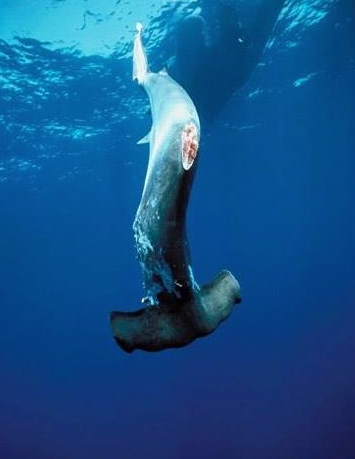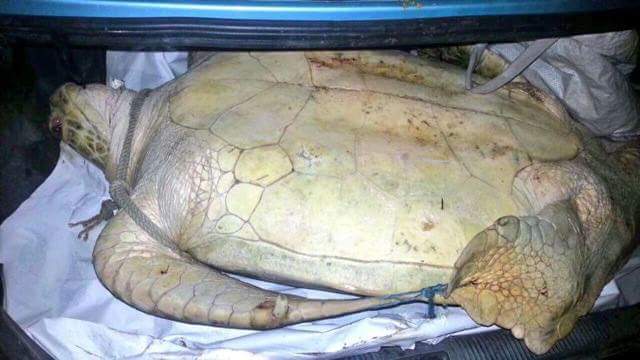I’ve been very off the radar in the last few weeks. I first went on a two week camping vacation and then needed to deal with some personal things, both sad – the death of a beloved cat – and great – I’ve now officially signed a book contract for my Contemporary YA! While I was gone, the other members of the ICARUS team have done an amazing job of holding down the fort – from thousands of miles away, no less! Now that I’m back, and I’ve attained some semblance of balance, I’m trying to get back into the swing of writing blog posts.
As I was reinserting myself into social media, I found my feed congested with numerous animal-related posts. This isn’t unusual, of course. A number of them had to do with recent developments in the Kristen Lindsey case (you might be familiar with the Texas veterinarian who shot a pet cat through the head with an arrow and then boasted about it on Facebook. If not, a quick Google search will bring you up to date) but a huge number of them were posts I’d either been tagged in by well-meaning friends, or that had been shared by people I follow (some of them Celebs) and who were just trying to share happiness and good feelings.
The problem is, the majority of these ‘feel good’ posts involve mock conservationists who are basking in the limelight of their own proclaimed knowledge and awesomeness. They are not, in fact, people acting in the name of conservation, nor are they acting in a manner that will meaningfully further genuine conservation. The ICARUS group has posted before on this subject, and we’ll post again, unfortunately, because it is a constant struggle to convey to the public exactly why these (many times) adored and revered ‘experts’ are doing more harm than good in the world of conservation. I like to use the 3M system when taking measure of a supposed conservationist.
Media – Just how much media coverage does this person receive? You can’t always control whether or not the media focuses on you, of course, but does the person seek media attention out? To they regularly engage in media outreach by posting videos of themselves working for their conservation? Do they constantly offer professional opinions on whatever animal welfare subjects are trending? And does their professional opinion consist of comparing what they do, to what the subject is, in a fashion that presents ‘their’ way as the ‘right’ way?
Money – Does the person gain money from directly interacting with their animal, allowing the public to directly interact with them, or by exploiting the animals by using them to make movies, or commercials?
Me – Does the person focus primarily on themselves, what they do, and how they do it, rather than the animals and their plights? Another good judge is to look at it from the standpoint of ‘If you removed the supposed expert from the situation, would you still get information about the animals, or would the whole thing be meaningless without the expert?’ If you can removed the ‘main character’ and still walk away with a plethora of information about the animal and it’s plight, then the focus is truly on the animal. If you can’t remove the ‘main character’ and still learn something about the animal, then the supposed conservationists has made it all about them, rather than the animals.
And yes, some of these are folks we’ve spoken out against before. We don’t have any personal vendetta against them, we simply do not agree with that they’re doing, and how they’re influencing the public, and they remain squarely in the spotlight of the public’s enamored eye, thus making themselves a target for us to counter.
The first culprit of these mock conservation articles in my news feed is no stranger to conflict. Bhagavan “Doc” Antle has been at the center of both loving fans, and lawsuits, often in equal measure.

Since Rolling Stone featured him in a recent article (why, oh why, Stone, can you not grasp the need for research in your articles?) about the death of a zoo worker in New Zealand, the aforementioned article has cropped up in my newsfeed repeatedly, often accompanied by comments along the lines of ‘This guy has the coolest job ever!’ or ‘Sign me up, I want to visit!’ or ‘This guy is amazing! Saving those rare cats!’
This is *the* most difficult things to counter in the world of media. Misinformation. In a world where Google is the go-to answer for everything, the majority of people read an article published by a well known name and then perceive whatever is written within that article as irrefutable fact. Tragically, this is how falsehoods are spread thousands of times over. Rolling Stone portrayed Antle as a boisterous, eccentric, but utterly devoted conservationist, who runs a sanctuary for rare big cats. They smoothed over Antle’s blatantly chauvinistic and arrogant belief that ‘there is no valid critic of Doc Antle’ as a laughable part of his personality. The author of the article did not seem bothered by how Antle likens those who do not support direct interaction with wild animals to ‘jihadists’ who don’t believe there’s any other way to see the world. Within the first few moments of the interviewer’s visit Antle made it clear that he both believes himself to be above reproach, and that anyone who speaks out against him is an extremist bent on destroying him. His business parks (and they are his “business”) are not GFAS accredited sanctuaries, but rather breeding facilities, or public entertainment facilities. In every day social interactions, someone who speaks of themselves in such a way would be quickly abandoned by those around him for acting like a pompass ass. But in Antle’s case, the interviewer only laughed it off as ‘personality’.

The article went on at length, covering Antle’s background and early years, detailing how he first purchased a tiger cub from a friend with ‘zoo connections’ (likely this cub was a victim of the breeding-for-public-attraction at zoos) and how after training it to sit still, he got the idea to charge people money to have their photographs taken with it. Oddly the article fails to mention that when Antle left Virginia he also left a number of animals (primarily fowl and deer) abandoned in their enclosures on his property. There was also concern involving a possible tiger bite at that facility, but as it occurred in 1989 records about it are difficult to find. I live not far from where he was located, however, and everyone knew about ‘that crazy moron with all those animals who fancies himself an expert’. Then one day, he was simply gone, and the county was left to clean up the aftermath, and re-home the animals.
The article also failed to note any of almost 40 violations registered by the USDA alone (there are other charges or violations from other groups) that Antle has managed to collect over the decades that he’s been breeding and mishandling wild animals. Many of these involve inadequate housing, or enclosures, failure to provide appropriate feed, actual escapes of cats and apes, and at least once incidence of attack on a model being used in a photo shoot. In that case, Antle vehemently insists that the model cut her head by falling off a platform, despite that the treating doctors documented the injury as a big cat bite, and the model underwent the rabies vaccination course.
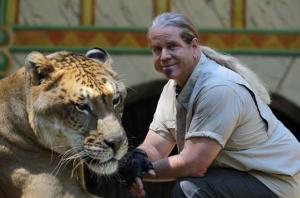
Antle’s list of violations is a matter of public record, but continues to be overlooked by the media who offer up stories of his supposed efforts in conservation. Here are two links highlighting how what Antle does is damaging, and his USDA violations.
Next on the list of mock conservationists is also someone we’ve talked about before, and someone who has a throng of followers and fans. I’m sure posting him here will be met with defensive comments. I give you my word, I’m only including him in this post because stories featuring him have shown up in my feed multiple times in the last week. Kevin Richardson – often referred to as the Lion Whisperer – is known across the globe for ‘being accepted as part of the pride’. The problem is, the ‘pride’ is an artificial one comprised largely of animals that Kevin himself bought (arguably to keep them from being used in canned hunting, but by buying them, he still put money into the canned hunting industry) and hand raised himself. Objectively, his ‘acceptance’ by this pride is no different from the ‘acceptance’ of any backyard owner who interacts with their captive exotic cat.

Kevin puts out videos quite often, all of them featuring him interacting with his lions, sometimes outlandishly riding them like ponies, or roughhousing with them. He has trained a number of his animals for movies, and has used them for such. In this case, the video was shared by multiple people, showing up repeatedly in my feed as ‘He releases a lion back into the wild, but then something amazing happens’ or some version of that. I recognized Kevin immediately, so I knew it was false. I did read the article, and watch the video, however, so I could say that I had. You can find the article and video here. Both the ‘bait tag’ and the title of the article state clearly that a lion is getting returned to the wild.
The truth, however, is that this is a lion Kevin bought as a cub, and then hand raised, and it is not being released into the wild – and has never even been in the wild. The author of the article clearly has no idea what’s actually going on, and has even tagged the post with hashtags like #wildanimals.
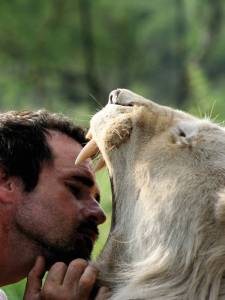
Throughout the video, Kevin interacts with his own lions, yet he never talks about wild lions, their plight, or anything conservation related. He never makes it clear that he bought the animal in the video, or that it is a captive animal, or that it’s going to remain captive. He gives the viewer no objective, tangible information at all on lions. He discusses the lion’s unusually white coloring, but does not explain that he owns dozens of other white lions, instead, leaving the viewer with the sensation that this lion is somehow special. Besides stating ‘I don’t ever think for one moment that they’re domesticated’ Kevin does not address the fact that he’s playing with wild animals, nor that by doing so, he’s endangering both himself, and the lions. Instead he says that the reason he can interact with them is because ‘I have a relationship with them.’ This is – verbatim – the exact reasoning that every private big cat owner uses to justify the fact that they choose to keep a wild animal captive as a pet.
Richardson’s videos are perpetually shared, and touted as amazing feats of relationship between a man and his animals, and more often than not, they are portrayed incorrectly as animals being released into the wild, or ‘rescued for conservation’ when, in reality, he uses them to make movies and television shows, documentaries (which focus on him and his animals, rather than wild animals) and youtube videos showcasing both him and his lions and hyenas. While Richardson has spoken of conservation, and participated in conservation efforts outside his own sanctuary (which is not GFAS accredited, because, in part, of his direct interaction with his cats) he remains most known for all of those videos and movies which feature him playing with his own captive lions. Even the video I’ve linked to is basically a six minute commercial for Fixodent. It is undeniable that the selling point, and what viewers will remember most, is Richardson playing with the lions, and by using the lions to sell a product, Richardson is exploiting them.

The last two people I’m going to talk about are not unlike Richardson.
The first as been around for many years, but I hadn’t heard of him until one of his videos appeared in my feed. The video itself is quite old too, and with 38 million+ views on youtube, I’m amazed I haven’t seen it before. His name is Sulo Karjalainen – the Bear Man of Finland – and his videos are featured on websites like ‘cute overload.com’ The one that showed up in my feed can be seen here, and had a catch phrase like ‘Only one man dares swim with a polar bear’.
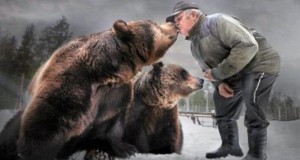
A celebrity in his homeland because of the ‘special bond’ he has with his bears, Sulo seems to interact with them on a daily basis, and has taught many of them to do tricks. He’s been featured on various sites. He first began by raising orphaned cubs, and if they couldn’t be released into the wild, he kept them. Currently, he owns six bears, and a number of lynxes, housing them at the Kuusamo Large Carnivore Centre.

As there is a language barrier on many of the websites, it is difficult to find a great deal of information about Sulo, but it is clear that he considers conservation to be his main goal. Even though videos of him playing with his bears continue to crop up.
Similar to Sulo, Shaun Ellis the ‘Wolf Man’ of the US, supposedly shares a ‘special bond’ with his wolves. Though Ellis started out researching wolves, he soon fell into the roll of ‘special expert’ and began actually living with the wolves and interacting with them daily.

After becoming a household name through several documentaries – all of which focused on Shaun living with the wolves and being ‘one of the pack‘ in a mirrored wolf-version of Kevin Richardson and his ‘pride’ of lions, Shaun has since relocated to the UK where he runs a center that offers courses on understanding wolf behavior, and dog behavior, and bizarrely enough, encounters with the wolf hybrids that Ellis breeds.

The fact that he actively breeds wolf hybrids alone is a testament to how damaging his influence is. Ellis claims that the hybrids are ‘used extensively in his research‘ though it’s not clear how breeding and studying hybrid animals can actually benefit wild wolves. Despite that he makes money off of allowing the public to play with his hybrid animals, and even offers courses in learning how to interact with them the way he does, Ellis is regarded as a hero for conservation, something that boggles the mind when one considers that he propagates the crossbreeding of wild and domestic animals for profit. Obviously, neither of these facilities are GFAS accredited sanctuaries.

I’ll end this post with probably the most recognizable group on the Internet today, the Black Jaguar White Tiger foundation. With over 4 million followers on Instagram, Eduardo Serio’s questionable ‘rescue’ foundation has become a social medial monopoly. They post thousands of videos portraying rampant mishandling of the animals in their care, do not believe in spaying or neutering their cats, and claim that ‘all is possible if you simply love each other’.
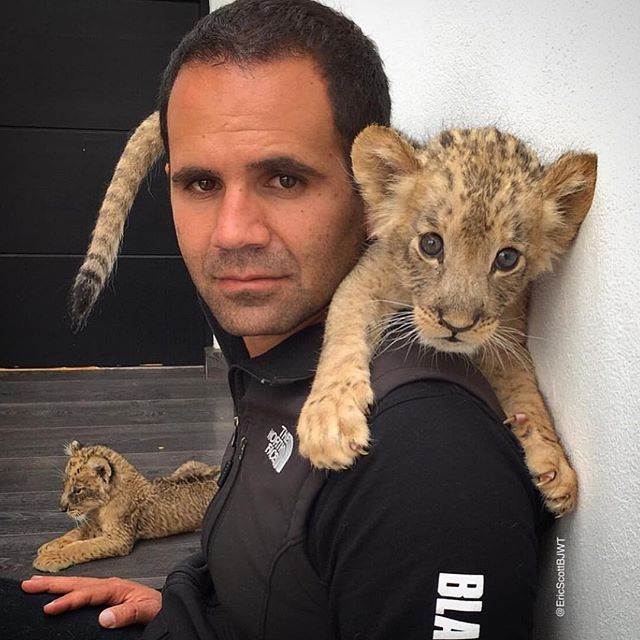
Their foundation page hosts a sponsorship section in which you can choose to donate anywhere from $25.00 t0 $1,000 per month in exchange for rewards ranging from a simple certificate saying that you supported the foundation to a photograph of your ‘sponsored baby’, bracelets, FaceTime calls with ‘your baby’, a free t-shirt every month, a cast of ‘your baby’s’ paw print, and a 2 day visit for 2 guests to the sanctuary that includes hotel and meal expenses.*
Startlingly, there is never a shortage of ‘babies’ to be sponsored.

Kate Walsh comes to Blackjaguarwhitetiger Foundation to show her full support. Kate learns a lot of how the Foundation runs from Founder Eduardo Serio. Kate gets to spend time with 5 month old pumas, 4 month old lions, a 5 month old black jaguar, 250 pound year old lions, and gets to play with and feed lion cubs.
Pictured: Kate Walsh Ref: SPL996172 140415
Picture by: EBLV / Splash News
Splash News and Pictures
Los Angeles: 310-821-2666
New York: 212-619-2666
London: 870-934-2666
photodesk@splashnews.com
To date Eduardo claims to have rescued near 200 big cats–primarily from circuses or places that wanted to use them as ‘photo props’ and insists that he’s given them the best life possible. Oddly, Eduardo does not seem to connect his own continual rotation of celebrity visitors, all of whom are allowed to hold, feed, play with and coddle his cats in return for donations and media exposure with the ‘photo prop’ life he ‘saved’ them from.
In addition, he cannot explain how nearly all of the ‘rescues’ are cub small enough to be held and played with, though they supposedly came from circuses, which arguably have no use for such young animals. There is no transparency to Black Jaguar White Tiger in any area of the foundation and thus it remains virtually impossible to discern what, if any, of Eduardo’s claims are true. Yet through the venue of social media, BJWT continues to rake in huge amounts of money through donations and backers, despite that the foundation itself consists of nothing more than a house and somewhere between 8-100 acres of land, not nearly enough space to proprietary house 200 big cats. Though the foundation is apparently registered as a “sanctuary” by Mexico BJWT is not a GFAS accredited sanctuary.
Unfortunately, there are many, many more ‘experts’ who exploit their animals even as they’re revered for their conservation efforts. I merely listed those who showed up in my newsfeed recently under the guise of releasing wild animals, or setting examples as to what we should all strive for in matters of conservation. For me, the opposite is true. They all set an example of what you should never do in the name of conservation.
I understand – before anyone comments in defense of anyone – that once a video is out there on the internet, it’s impossible for those in the video to monitor exactly how the public shares it, and the articles to which it might be attached. This is precisely why it is so very vital for those experts to be extremely cautious in what sorts of videos are released, and what sort of example they set.
So the next time a ‘feel good’ animal video or article pops up in your news feed, remember the Three ‘M’s of Mock Conservation. See if they apply to the article or video. If so, then think twice about sharing it, and instead consider leaving a thoughtful comment under it, urging people to dig a little deeper into the motives behind that video or photo. Remember, the more times a video or photo is shared, the more the lies within it are propagated and the longer they will endure.
Author: Artemis Grey
*This offer has been removed from the foundation’s website since the publication of this article.








 Despite scrubbing the wound immediately with disinfectant from the vet, an infection set up, requiring antibiotics.
Despite scrubbing the wound immediately with disinfectant from the vet, an infection set up, requiring antibiotics.

